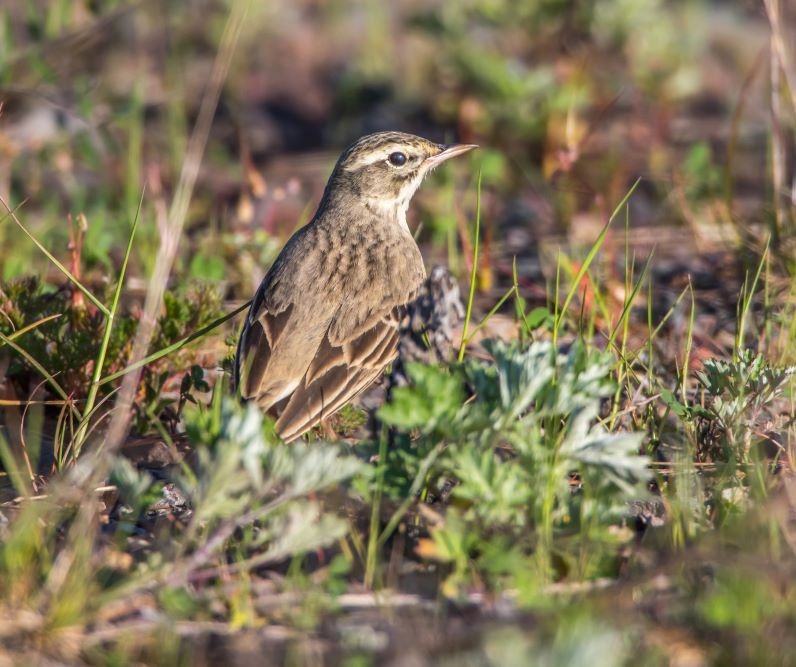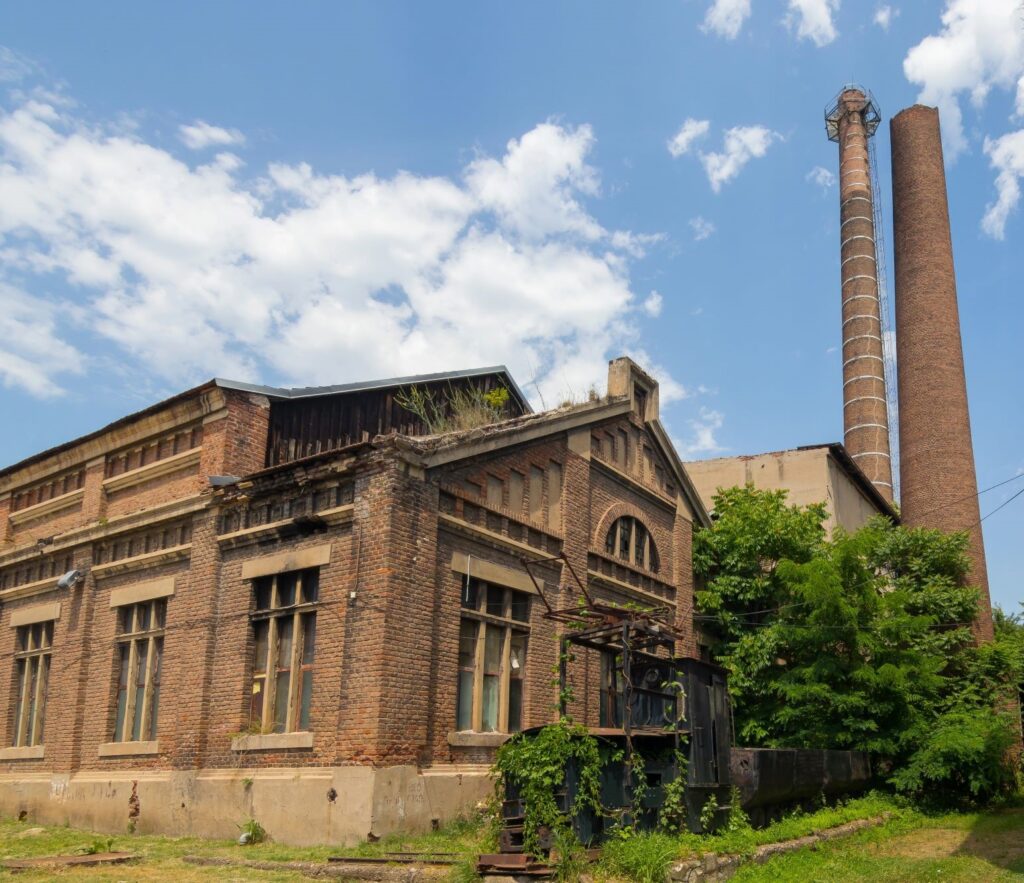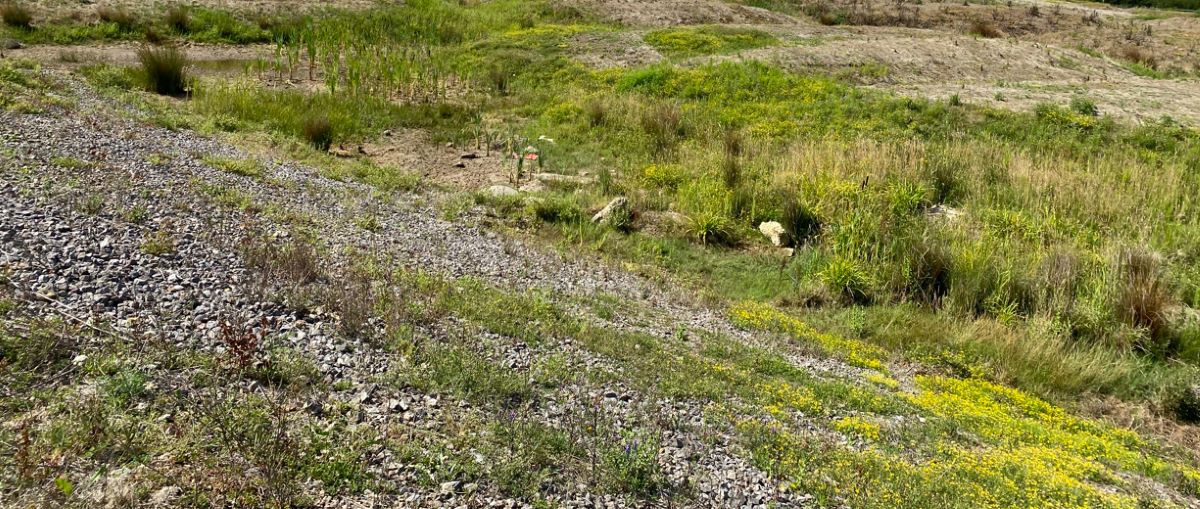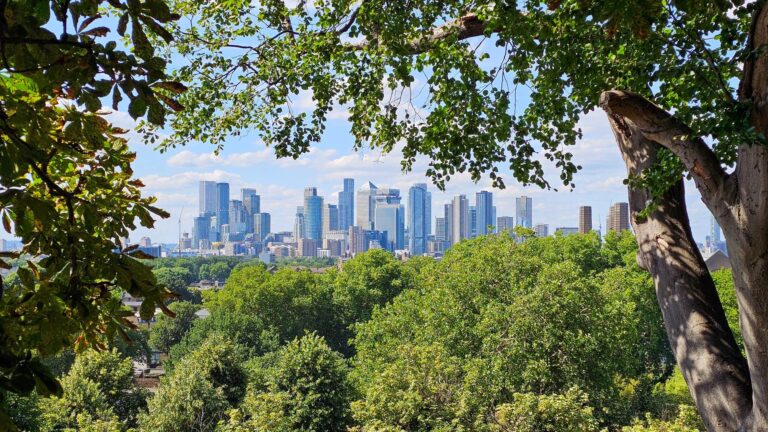Navigating Biodiversity Net Gain While Protecting the UK’s Most Overlooked Habitats
When people think of valuable wildlife habitats, their minds often picture ancient woodlands, wetlands, or meadows. Yet, some of the richest and most unique biodiversity in the UK thrives in the most unexpected places, such as old industrial yards, quarries, rail sidings, spoil heaps, and demolition sites.
These patchwork landscapes are known as Open Mosaic Habitats on Previously Developed Land (OMH). Recognised as a priority habitat under the UK Biodiversity Action Plan and Section 41 of the NERC Act, OMH supports an extraordinary range of species. Buglife calls them the “rainforests of the UK” for their ability to sustain thousands of invertebrates, many of which are rare or endangered.
This article explores why these overlooked environments matter for biodiversity, and what developers and planners need to consider when OMH is present on a site.
What is OMH?
Open Mosaic Habitat on brownfield land is remarkably diverse in its composition. Unlike many habitats that rely on stability, OMH thrives on disturbance. Its value lies in its constantly changing mosaic of contrasting features, typically including:
- Bare, nutrient-poor ground: Supports early successional plant species.
- Short wildflower grasslands: Attract pollinators and rare invertebrates.
- Damp hollows and pools: Provide breeding areas for amphibians.
- Scattered scrub or trees: Offer shelter for birds and small mammals.
- Vertical faces, rubble, or spoil: Create nesting niches for solitary bees and other species.

It’s this variety – not uniformity – that gives OMH its ecological strength.
The result is a dynamic and shifting environment where specialist plants, fungi, and invertebrates coexist, providing crucial habitat for reptiles and birds to thrive.
How Does OMH Form?
OMH often forms unintentionally where disturbance prevents uniform vegetation from establishing. Activities such as vegetation clearance, soil movement, or demolition interrupt natural succession and maintain patches of bare or nutrient-poor ground.
These conditions allow pioneer plants and early successional communities to develop, often attracting rare invertebrates within just a few years. In essence, OMH is a habitat that flourishes not despite disturbance, but because of it.
The Challenge for Developers
OMH presents a unique challenge for developers due to its ecological value and the complexity it introduces to achieving the mandatory 10% Biodiversity Net Gain (BNG). Its high distinctiveness within the BNG metric means losses are costly and difficult to offset, directly influencing project viability.

1. Conservation Value of the Habitat
As a Section 41 priority habitat, OMH carries significant weight in planning and BNG assessments. Within the metric, it is classed as a “High Distinctiveness” habitat, meaning if lost, it must be replaced with an equally high-value habitat.
Advice: Early Assessment
Undertake ecological surveys at the earliest stage to accurately identify and characterise OMH. Integrating an ecological strategy early helps retain valuable habitats where possible, reducing offsetting costs and avoiding unexpected budget pressures later.
2. Habitat Creation, Management and Maintenance
Every OMH site is unique, shaped by its substrate, history, and colonising species. This diversity makes OMH difficult to replicate. It is also vulnerable to succession without ongoing disturbance, it can quickly develop into scrub or woodland, losing its distinctive character.
Advice: Managing and Mitigating Impact
Where impacts cannot be avoided, focus on enhancement or habitat creation measures that deliver Biodiversity Net Gain, even if not exact OMH replication. Practical approaches include:
- Introducing varied substrates (rubble, sand, gravel, crushed concrete).
- Creating structural diversity including mounds, hollows, pools, and vertical faces.
- Maintaining bare ground through rotational clearance or light grazing.
- Encouraging natural colonisation using locally sourced seed.
- Connecting new habitats into wider ecological networks.
These interventions can maintain the ecological functions of OMH while contributing positively to site design and regulatory compliance.
3. Scarce Biodiversity Units
OMH is among the most valuable and scarce habitat types in England. As a result, OMH biodiversity units are both limited and costly to obtain when offsite compensation is required. Developers often find that sourcing units from suitable habitat banks or offsetting options can be prohibitively expensive, especially in high-demand areas.
Advice: Cost and Credit Consideration
If OMH loss is unavoidable, explore offsite opportunities early in the planning process and factor potential costs into feasibility assessments. Early foresight can prevent delays and unexpected expenses later in project delivery.
4. Statutory Credits
Purchasing statutory biodiversity credits is the last resort in the mitigation hierarchy and typically the most expensive option, as due to the Spatial Risk Multiplier (SRM) within the metric, two statutory credits need to be purchased to offset one biodiversity unit. These credits are set by DEFRA and intended as a last resort when onsite and offsite measures are not feasible. The current cost is estimated at £48,000 per statutory credit for Tier A2 Medium high distinctiveness e.g. open mosaic habitats.
Advice: Strategic Cost Planning
Estimate potential credit costs early and benchmark these against other design options to inform viability assessments. This ensures informed decision-making and avoids costly late-stage redesigns.
OMH and Opportunities
While OMH can pose challenges under planning and BNG legislation, it also offers opportunities to deliver meaningful biodiversity gains. By recognising OMH early, developers can position biodiversity as an asset rather than a constraint.
Opportunities include:
- Creating or enhancing OMH onsite to meet BNG objectives.
- Supporting pollinator networks and local nature recovery strategies.
- Designing developments that retain OMH features as part of green infrastructure.
Protecting OMH isn’t about preserving dereliction, it’s about recognising the ecological richness in brownfield land and finding practical ways to conserve and enhance biodiversity for the long term.
Summary
Open Mosaic Habitats represent some of the UK’s most ecologically valuable, yet often overlooked, landscapes. For developers and planners, its presence can complicate Biodiversity Net Gain assessments but also unlock opportunities to deliver meaningful environmental outcomes. By identifying OMH early, integrating ecological planning into design, and adopting cost-effective mitigation strategies, project teams can balance commercial viability with biodiversity protection turning potential challenges into long-term ecological and reputational gains.
Kalia Symeonidou
Senior Ecology and Biodiversity Net Gain Consultant
Kalia has successfully managed numerous protected species surveys and her portfolio includes BREEAM and Biodiversity Net Gain assessments. She has conducted ecological works on a range of projects of a variety of scales within the private and public sectors including residential, industrial, infrastructure and commercial development schemes. Kalia is a skilled project manager with a good understanding of the planning process and its interplay with ecology and biodiversity; this enables her to deliver high quality, pragmatic solutions for the client and to assist them throughout the application process.

Open Mosaic Habitats on Previously Developed Land (OMH) FAQs
What qualifies as an Open Mosaic Habitat (OMH)?
An OMH is land that has developed a mix of bare ground, wildflower grassland, scrub, and wet or dry patches, often on previously industrial or disturbed sites. Its value lies in the mosaic of contrasting microhabitats that support rare invertebrates, plants, and birds.
Why is OMH important for biodiversity?
OMH supports thousands of species that struggle to survive in more uniform landscapes. Many Red List invertebrates, such as mining bees and beetles, depend on the early successional conditions OMH provides. It’s one of the UK’s richest yet least-recognised habitats.
Can developers create new OMH as part of Biodiversity Net Gain (BNG)?
Yes, but it’s challenging. Because OMH depends on specific substrates and natural colonisation processes, it can’t be “designed” in a conventional way. Developers can mimic OMH conditions, for example, by using rubble, sand, and gravel layers, but replication requires long-term management and monitoring.
How is OMH treated in BNG calculations?
OMH is classified as a “high distinctiveness” habitat in the statutory biodiversity metric. That means losses carry a high penalty and require robust compensation or avoidance. Retaining existing OMH areas on-site usually offers the best route to compliance.
How can landowners or councils identify OMH on their sites?
Indicators include: a patchy mix of bare ground and vegetation, varied soil types, wildflowers typical of nutrient-poor soils, and invertebrate activity. Ecologists use the Defra OMH guidance and field surveys to confirm eligibility as a Section 41 habitat.
Why can’t OMH simply be replaced with new “green space”?
Ordinary green space, like lawns or tree planting, lacks the complex structure and soil diversity that OMH species depend on. To compensate for OMH loss, replacement habitats must replicate its function, not just its appearance.
What practical steps can support OMH on brownfield sites?
Keep some areas unsealed and open to natural processes; manage vegetation to maintain bare patches; avoid over-fertilisation; and connect OMH zones with nearby wildlife corridors.





